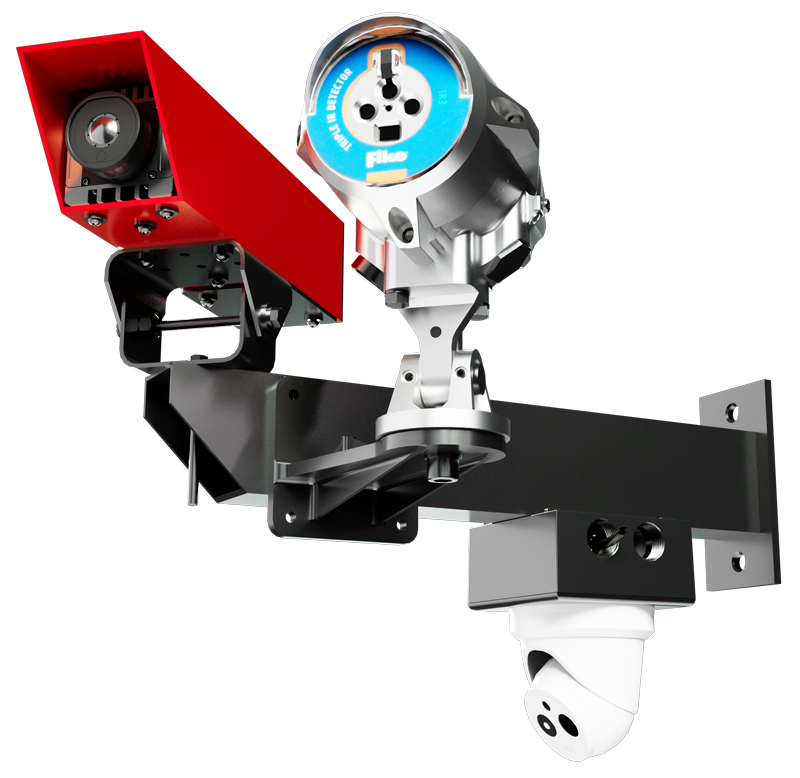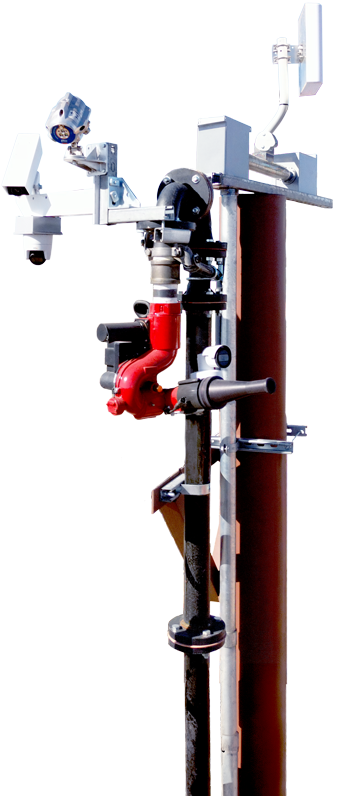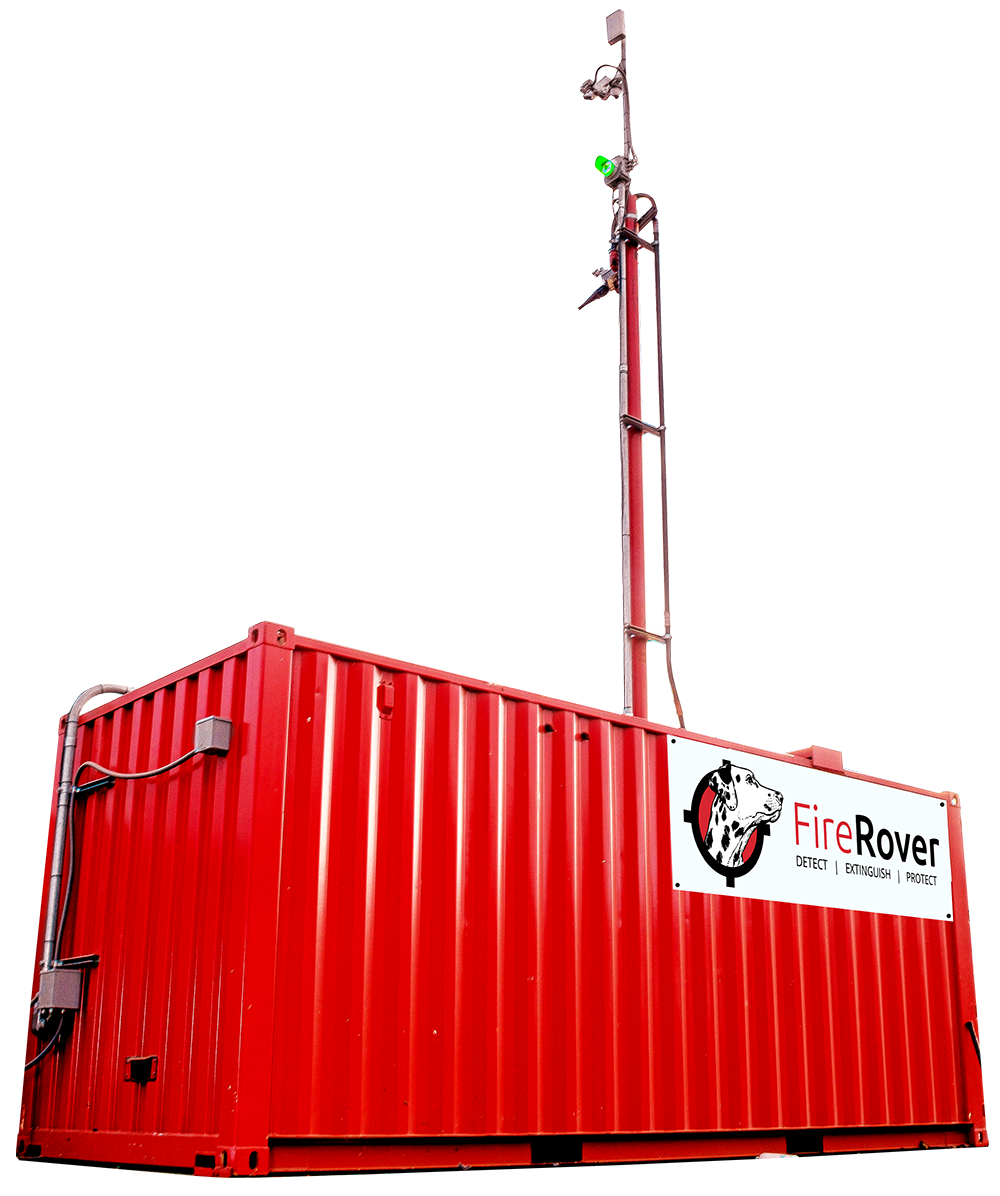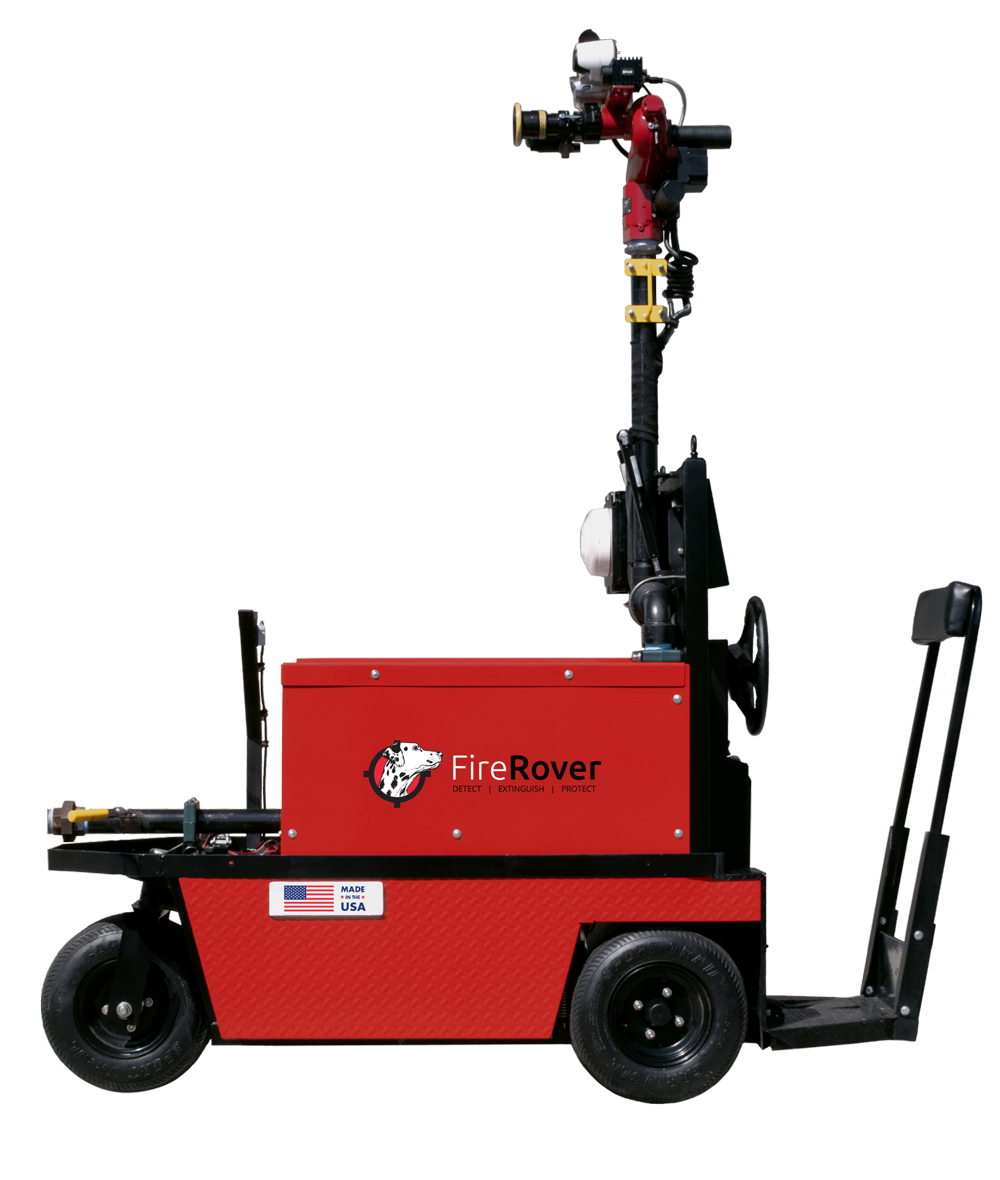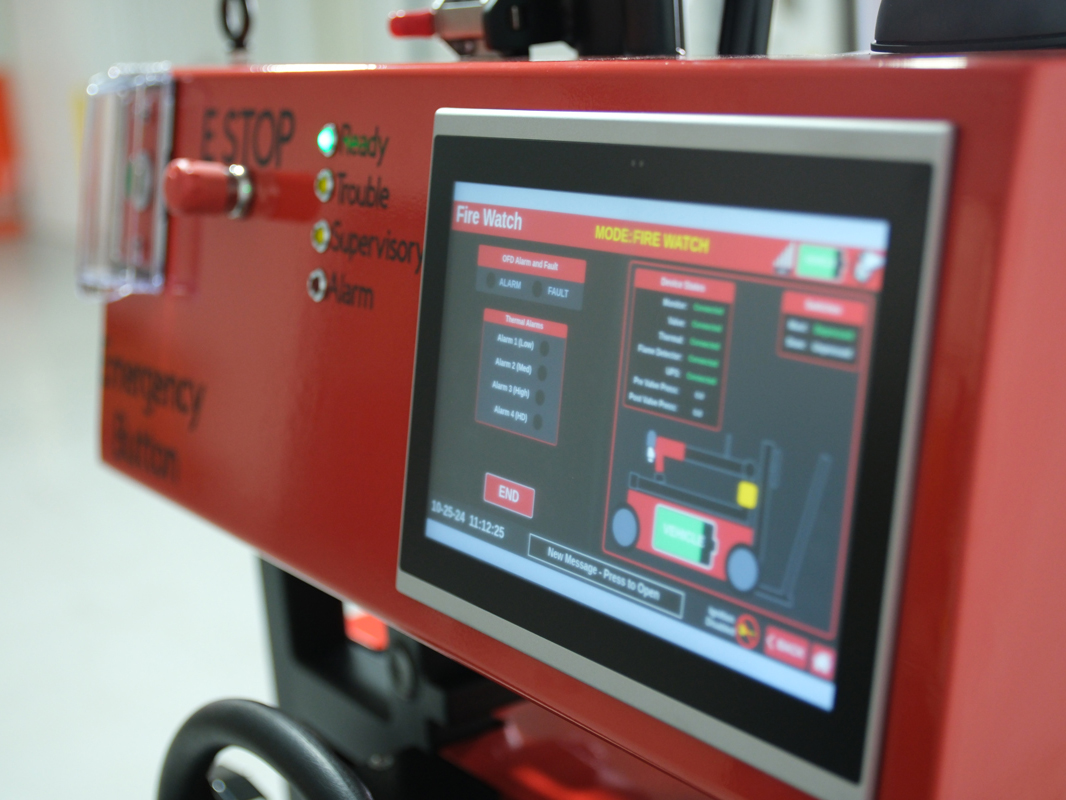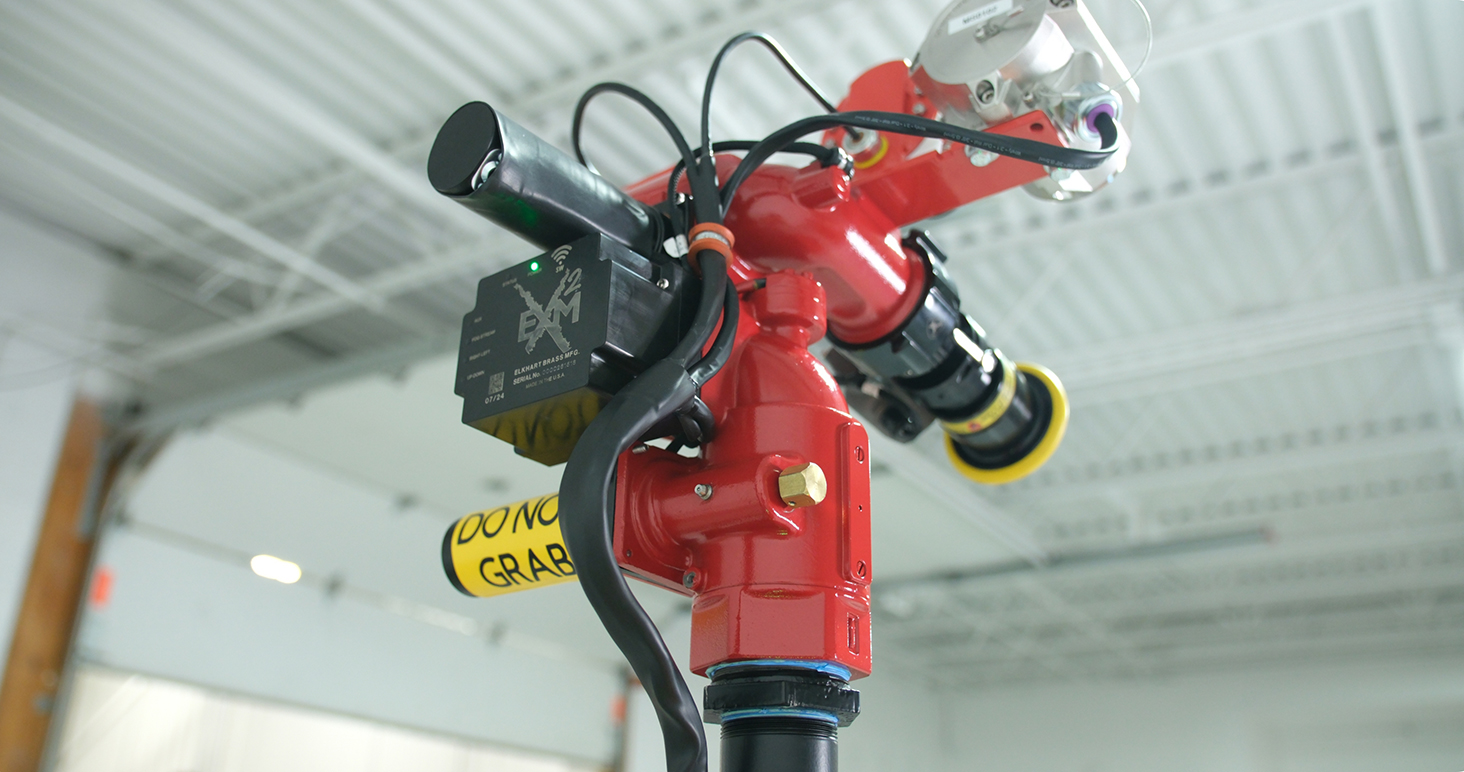Electric vehicles are on the rise, and they come with a unique set of risks — including battery fires that behave very differently from traditional vehicle or structure fires. For businesses, warehouses, or public facilities that store, charge, or handle EVs, understanding how to put out an EV battery fire is critical to protecting people, property, and operations.
Lithium-ion batteries can ignite suddenly and reach temperatures exceeding 2,000°F, producing toxic smoke and posing significant re-ignition risks even days after a fire appears to be extinguished. Traditional fire suppression methods often fall short, leaving facilities vulnerable to extended downtime and liability concerns.
In this guide, we’ll explore the science behind EV battery fires, the challenges of suppression, practical approaches, and how advanced systems — including Fire Rover — are transforming EV fire safety for high-risk facilities.
The Science Behind EV Battery Fires
Electric vehicle fires are fundamentally different from traditional fires because of the chemistry inside lithium-ion batteries.
- Thermal Runaway: When a cell fails, it can trigger a chain reaction, generating extreme heat and igniting neighboring cells.
- Rapid Temperature Rise: Temperatures can exceed 2,000°F within minutes, far hotter than most structural fires.
- Toxic Emissions: Burning EV batteries release harmful gases, including hydrogen fluoride, which pose risks to humans and the environment.
For businesses, this means a standard sprinkler system or handheld extinguisher may be insufficient. EV fires require specialized detection and suppression strategies to prevent escalation and minimize damage.
The Challenges of Extinguishing EV Battery Fires
EV fires present unique obstacles:
- Water Limitations: While water can cool batteries, large quantities are often required, and runoff can create environmental hazards.
- Accessibility Issues: Battery packs are sealed and integrated into the vehicle’s structure, making direct suppression difficult.
- Toxic Smoke: Exposure to smoke from burning lithium-ion cells is hazardous for anyone nearby.
- Re-Ignition Risk: Even after a fire appears controlled, individual cells can reignite hours, days, or weeks later.
Why are EV fires so hard to put out? The combination of extreme heat, chemical reactivity, and internal design of batteries makes them resistant to conventional suppression techniques. Unlike typical fires, stopping the visible flames does not always eliminate the hazard.
EV Battery Fire Suppression Approaches
Water-Based Methods
- Prolonged Dousing: Firefighters may apply large volumes of water to cool the battery and prevent thermal runaway.
- Submersion Tanks: Specialized facilities can immerse EVs in water tanks to contain the fire safely.
Water is effective for cooling but requires significant resources, can damage equipment, and may create runoff or flooding hazards.
Foam and Chemical Agents
- Foam Systems: Can coat the vehicle and limit oxygen exposure, but penetration into sealed battery packs is limited.
- Chemical Suppression: Some clean agents interrupt chemical reactions, though most are less effective on fully enclosed battery cells.
Advanced Fire Suppression Systems
Modern systems, like Fire Rover, combine remote thermal monitoring with targeted suppression. These systems:
- Detect hotspots before flames fully develop.
- Apply suppression agents precisely, reducing water or chemical use.
- Integrate with facility emergency protocols, allowing human operators to verify risks and act safely.
By providing early detection and controlled suppression, advanced systems minimize damage, reduce firefighter exposure, and speed containment.
Best Practices for Facilities Facing EV Fire Risks
Facilities handling EVs can take proactive steps to reduce risk:
- Preparedness Protocols: Designate EV storage and charging areas, train staff on emergency response, and maintain clear access for fire suppression.
- Detection and Response: Use thermal cameras, smoke detectors, and AI-assisted monitoring to identify fires early.
- Suppression Strategies: Combine traditional methods with targeted suppression systems to contain fires without flooding entire areas.
- Post-Incident Containment: Monitor EVs for potential re-ignition and secure contaminated water or chemical runoff.
A proactive approach reduces the likelihood of catastrophic loss and improves safety for employees and first responders.
How Fire Rover Fits Into EV Fire Safety
Fire Rover offers a tailored solution for high-risk facilities managing EVs:
- Remote Detection: Thermal cameras detect heat anomalies before flames appear.
- Targeted Suppression: Agents are applied precisely to the fire source, minimizing collateral damage.
- Human Verification: Operators confirm the threat and coordinate emergency response, reducing false alarms.
- Reduced Risk and Resources: Minimizes water use, protects staff, and speeds containment compared to traditional methods.
For warehouses, EV charging stations, or industrial facilities, Fire Rover integrates seamlessly with existing safety protocols, providing early detection and rapid suppression in challenging environments.
Safeguard Your Facility From EV Fire Risks Today
EV fires are unlike traditional fires — and they demand specialized strategies to detect and suppress them effectively. By understanding how to put out an EV battery fire, implementing best practices, and leveraging advanced solutions like Fire Rover, facilities can safeguard people, property, and operations.
Don’t wait until a fire starts. Contact us today to explore EV fire suppression systems and learn how proactive monitoring and targeted response can protect your high-risk facilities.


